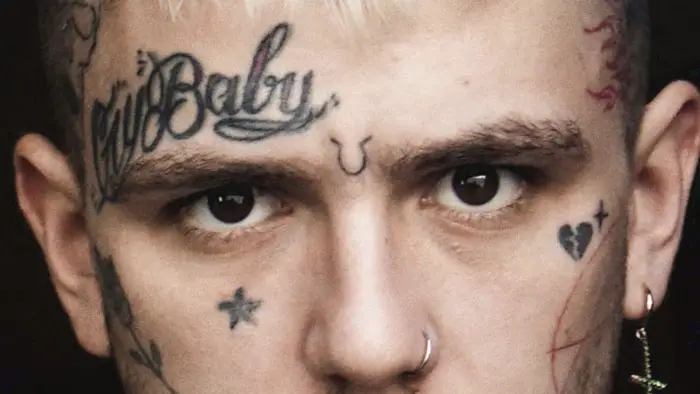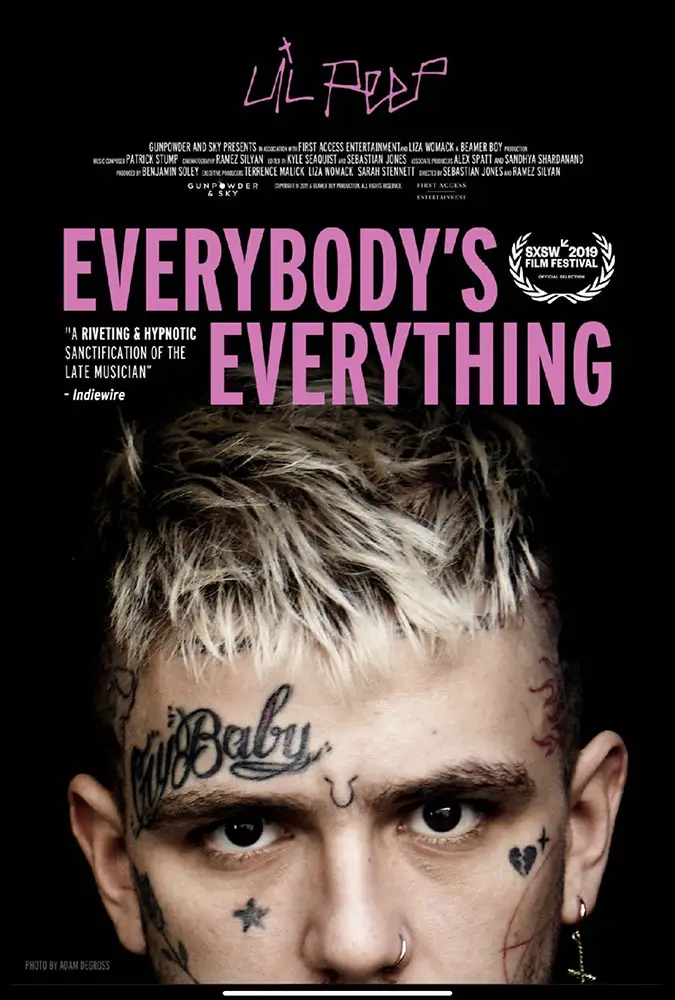
Lil Peep, Gustav Ahr, aka Gus, is no longer around for the world to know what his effect on music, art, and culture might have been. But we have been left a small legacy to understand in the newly released documentary, Everybody’s Everything produced by Terrence Malick. If you’re not familiar with Generation Z or its music, get ready for a crash course, though that’s not the point of Everybody’s Everything. The documentary is truly about how a young icon left this earth before his time and became something of an underground legend.

“Lil Peep created an evolution of rap combining the core elements of punk, emo, trap, and hip-hop…”
Everybody’s Everything opens on Lil Peep, with his signature, curious smile, finding his way, in somewhat of a haze, mirrored by the film’s camera work and editing, to a small stage where arms of teenagers who all hold out their cell phones like footlights to capture their idol in his element. Holding the mic close to his lips and head down, Lil Peep takes control and performs.
Lil Peep created an evolution of rap combining the core elements of punk, emo, trap, and hip-hop, which is a sound this artist owns. A product of Long Beach, New York, just south of Long Island in Nassau County, Gus, before he became Lil Peep, was a wide-eyed adorable youngster who was loved by his mother, Liza Womack, and grandfather, John Womack, who both played a prevalent role in the film and Lil Peep’s life. As it comes to light that his emotional imbalance was a result of his parent’s divorce, Gus turned to art, music, and songwriting to heal his wounds as well as drugs. Called Peep by his mother when he was little, Gus changed his name to Lil Peep, embarking on his journey to music legend, never knowing where he might end up, which was fine.

"…does not sugar coat any of Lil Peep’s life."

L’il Peeps “talent” might be in question to virtually anyone not in his age cohort. It isn’t a if he was an operatic singer/great instrumentalist/worldclass songwriter. So within the structures (and strictures) of that and more, this might be an interesting view – with some provisos. First, you have to be able to look at Peep’s trying-way-too-hard display of facial tats, metal inserts and a lot of other stuff that is either overdone, passe’ or just plain childish. And second, as I said, is that you have to be able to accept the “given” of this film that Peep’s “legacy” is of any note whatsoever. In 60 years will his music be played as much as Buddy Holly is today? Discuss.